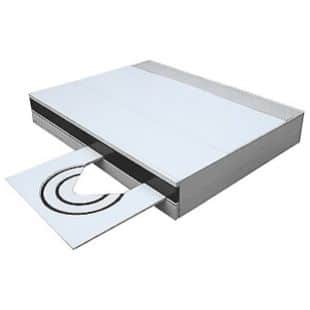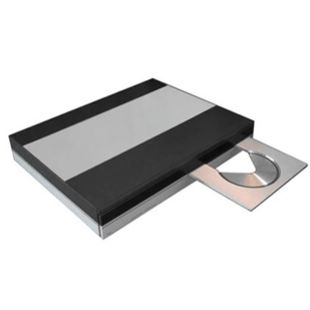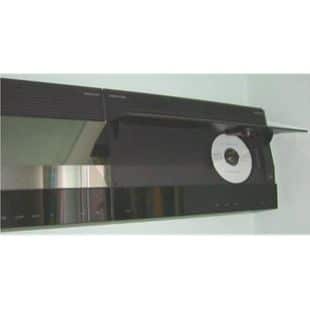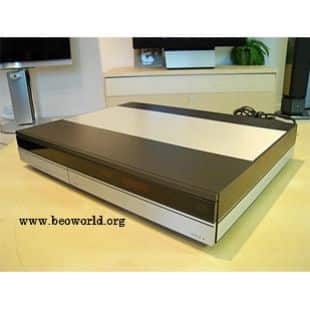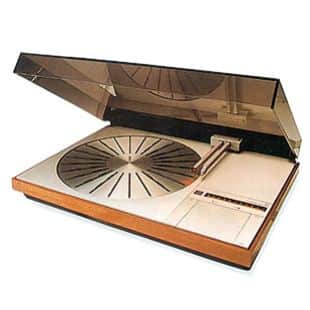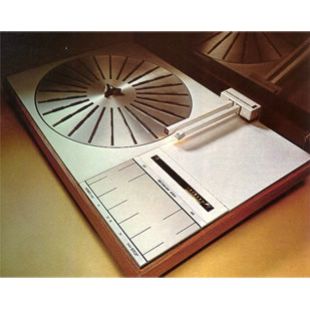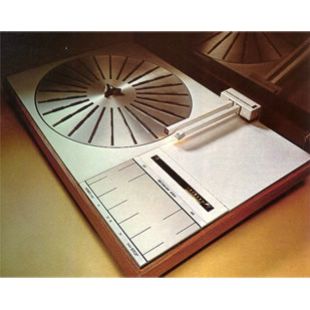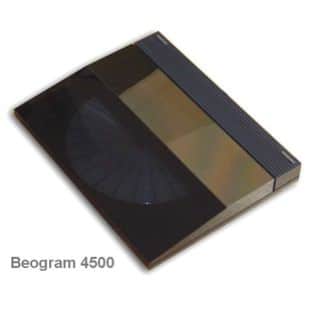BeoGram CD 7000

Beogram CD 7000 was distinctive because of its authentic sound reproduction as well as its large dynamic range. It was equally suitable for symphonic music and rock. Its many functions allowed you to pre-programme tracks for playback in any desired order. This CD player was the last in line as far as separates were concerned, replaced with the likes of Beocenter 2300 and Beocenter 2500.
Features:
Exclusive computer-controlled CD loading mechanism with extremely fast access time
CD tray machined from a 4mm solid aluminium plate for maximum mechanical stability and convenient loading
Disc tray cut-outs with rubber lining for 12 and 8cm discs
Spring-suspended CD mechanism and magnetic disc clamp
Special functions, such as scan and sequence programming, were carried out from Beolink 7000
Dynamic readout on Beolink 7000 of all functions, track bar, remaining time, elapsed time, scan, etc.
CD players are now among the simplest constructions in the electronic world and standard players are based on very few components, a simple electronic layout and use of economical materials, both inside the product and in the cabinet. In the construction of CD7000 the main objectives were the achievement of excellent mechanical stability, convincing sonic qualities and easy access to the CD functions.
The loading mechanism, the way the clamp function and the suspension of the CD mechanism were all points that received special attention. The high quality of the mechanical solutions was continued in the electronic circuitry and both were highly integrated and interdependent of each other.
The CD tray was very solid and elegant and the loading mechanism extremely durable. The tray was made from a 4mm thick sheet of aluminium and the conical recess for the CD was milled and diamond polished to the smallest of tolerances – to prevent dust gathering in the recess. The circular rubber profile protected the disc during loading and unloading, while the triangular cut-out facilitated unloading. To avoid static build-up the tray was connected to ground and to avoid ‘ringing’, a damping plate was placed at the innermost part of the tray, inside the cabinet.
The motorised movement of the CD tray was very fast and gentle. The movement was controlled by the microcomputer via an optocoupler and was a very stable mechanical solution with two parallel chrome plated brass rail tubes and precision plastic roller bearings. A nylon coated steel cord wire was applied for maximum duration and quiet transport. The electronically governed transport was very smooth, started the movement slowly, then speeded up very quickly, decelerating when the disc approached the clamp. Furthermore, it secured against possible damage occurring from obstacles either in front of the tray or in between tray and cabinet.
While the tray approached the clamp the disc was gently lifted off the tray and clamped between the CD mechanism and magnet. The magnet was placed on a bridge across the CD mechanism and when it engaged the disc the magnet was lifted away from the bridge. While the disc was rotating, the magnet was not in contact with the cabinet, but only the disc and CD mechanism.
This assembly was insulated very efficiently from the cabinet to prevent vibrations from the outside. A special suspension was designed, with 4 steel springs, encased in rubber. The springs ensured that the CD mechanism was fixed in the horizontal plane (i.e. across the disc), while a certain amount of movement was allowed in the vertical plane (i.e. up and down). Test showed that the servo system counteracts movements in the vertical plane better than in the horizontal plane, and the suspension thus was a good compromise with regard to immunity from external vibrations. The inherent frequency of the suspension was placed at 25 Hz to avoid tracking and focusing errors, which were prone to emerge if the CD mechanism was subjected to vibrations around 100 Hz and upward. Furthermore, at this frequency interference with the inherent frequency of the CD cabinet was also avoided.
The electronics
The CD format is one of the most precisely defined audio formats, but it is still possible to design differentiated products. The electronic solutions in CD 7000 were just as elaborate, the computer controlled loading just being one of the elements. Separate power supplies were available for the digital and analogue parts, and in connection with a careful print layout Bang & Olufsen achieved the most respectable electronic specifications. The digital-to-analogue filtering was special as well. First, a standard digital filtering (4 x oversampling) was applied to filter away the sidebands below 176,4 kHz. The analogue filtering at 176,4 kHz was carried out by a modified order filter. To avoid remnants of the 176,4kHz sideband having an effect on the filtering, a special suction circuit cut off the frequencies above 156,4 kHz. The modified filter was known as a ‘Bessel elliptical filter’. It had a very gentle filter characteristic and was not susceptible to ripple phenomena, phase distortion or ageing.
The functions
As with the other sources, operation was via the Beolink 7000, with full display readout of all functions. Special functions available included: the space function, where a pause of 4 seconds was added between tracks to facilitate track search on a tape recorded from CD 7000. Scan gave playback of the first 15 seconds of each track and was especially useful in connection with a sequence programming.
While you were scanning the CD, tracks could either be selected (compiled) or omitted and when the last track had been scanned, playback of the programmed sequence commenced. Sequence programming could also be carried out independently of the scan function and if you used the select programming, playback could be non-chronological. If you used the reject programming to leave out specific tracks, playback would be chronological.
Beogram 7000 could, ideally, be used as part of Beosystem 7000

